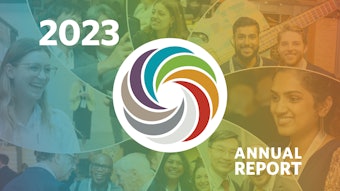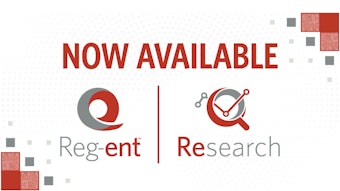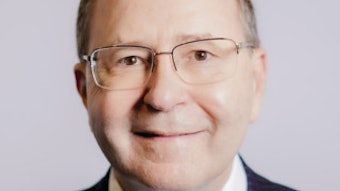Embracing Diversity: A Guide to Gender-Affirming Otolaryngology Care
Otolaryngologists play a pivotal role in supporting transgender and gender-diverse individuals on their journey toward aligning their gender identity.
Desi Gutierrez, MA, CCC-SLP, VyVy N. Young, MD, and Lyndsay L. Madden, DO, for the Voice Committee

Understanding Gender-Affirming Care
Gender-affirming care is a holistic, patient-centered approach that aims to improve congruence between an individual’s internal gender identity and their external gender expression. Through gender-affirming care, transgender and gender-diverse individuals can decrease gender dysphoria, or distress which results from misalignment between internal gender identity and external gender expression, or gain gender euphoria, which is the joy that results from alignment.
Like any other patient, transgender and gender-diverse patients’ individual needs and histories will be different. Gender dysphoria varies by individual, leading to unique targets and goals for each patient. For example, for some transgender men, having a high-pitched laugh may be dysphoric, but for others, it may feel more authentic than a low-pitched laugh. The same principle applies to desires for medical transition, as some individuals avoid surgery or hormone replacement therapy altogether. Many people have the desire to be assumed cisgender, but this is not the case for all transgender and gender-diverse individuals. Therefore, to provide the highest level of patient-centered care, the patient’s individualized goals need to lead our recommendations and care.
Gender-Affirming Care and You
In otolaryngology, we can support patients’ gender euphoria goals by modifying physical attributes, including facial features through facial feminization or masculinization surgeries. These surgeries can include modifying the hairline, forehead and jaw contouring, rhinoplasty, and chondrolaryngoplasty. Among transgender women, estimates suggest 50% have undergone facial feminization surgery.1 Transgender and gender-diverse individuals can also pursue modifications to their voice and communication through laryngology. Surgeries like a Wendler’s glottoplasty can increase pitch of the voice, while voice therapy can address various components of the voice that correspond to the perception of gender, including pitch, resonance, and intonation through behavioral intervention. Among transgender women, estimates suggest 62% have undergone or would like to undergo voice therapy and 19% have undergone or would like to undergo voice surgery. Voice therapy is the second most common intervention pursued by transgender women and transfeminine nonbinary people at 14% and 2%, respectively.1 Although the majority of otolaryngologic gender-affirming care is completed with transfeminine people, facial and vocal masculinization procedures are also gaining in popularity.
Regardless of your interactions with these subspecialties, all otolaryngologists would benefit from an understanding of gender-affirming procedures, as well as how to provide affirming care to transgender patients. Transgender and gender-diverse individuals will seek care for all pathologies under the otolaryngology umbrella, and their head and neck history related to these procedures may impact your recommendations and care. Moreover, they may benefit from a referral to the above subspecialities.
Impact on Mental Health and Quality of Life
Gender-affirming procedures can have a profound impact on the mental health and overall quality of life for transgender individuals. Following facial feminization surgeries, transfeminine people report improvements in anxiety, anger, depression, positive affect, meaning and purpose, global mental health, and social isolation.2 Similar effects are seen in voice and communication, as people with voice disorders demonstrate elevated rates of depression, anxiety, and psychological stress.3,4 These effects can be amplified for transgender individuals, as some evidence suggests transfeminine individuals with vocal dysphoria are willing to sacrifice 10 years off their life and risk death for resolution of their vocal dysphoria.5 Voice therapy has been found to improve anxiety and depression symptoms across patient populations.6 Specifically for transfeminine patients, voice therapy alone and when paired with Wendler’s glottoplasty has been found to improve patient’s voice-related quality of life.7
Addressing Healthcare Disparities
Transgender and gender-diverse individuals face significant barriers to accessing care, including limited insurance coverage; a lack of available, knowledgeable, and affirming clinicians; and outright refusal of primary and gender-affirming medical intervention by healthcare providers.8 This discrimination can lead to worsened psychological outcomes (e.g., depression, anxiety, drug and alcohol abuse) and healthcare avoidance behaviors for all care, including emergency medicine.8
Although we individually cannot remove all facets of discrimination in healthcare, it is important to identify those areas where we can improve the care of transgender and gender-diverse individuals.
First and foremost, by being knowledgeable about gender-affirming care, otolaryngologists can actively contribute to dismantling these disparities. Consider all aspects of a patient’s visit, from their intake paperwork to their interactions with support staff, to the orientation of mirrors in clinic rooms. Do these systems support gender diversity and the unique needs of transgender individuals? Consider your own actions and questions. Are your recommendations led by your own perspectives on what your patient should want? Are your questions strictly necessary to guide your patient’s care? These considerations not only foster a therapeutic alliance, ensuring that individuals feel heard, respected, and supported throughout their healthcare journey, but this is also a step toward fostering inclusivity within the broader medical community.
Collaboration with Multidisciplinary Teams
Gender-affirming care often requires collaboration with a multidisciplinary team, including speech-language pathologists, endocrinologists, social workers, and mental health professionals. Otolaryngologists who actively engage in these collaborative efforts contribute to a comprehensive and patient-centered approach, addressing not only the physical aspects but also the emotional and psychological well-being of their patients.
Top 10 Tips for Integrating Gender-Affirming Care
- Stay informed: Keep abreast of the latest research and guidelines on gender-affirming care.
- Foster a welcoming environment: Ensure that your practice is LGBTQ+-friendly through policies and staff training.
- Pronoun practice: Incorporate asking and respecting pronouns into routine patient interactions. Practice using pronouns you are not comfortable with outside of patient interactions.
- Cultural competency: Engage in ongoing training to enhance cultural awareness and sensitivity. Seek personal relationships with transgender and gender-diverse individuals beyond clinical settings.
- Collaborate with specialists: Work closely with speech-language pathologists and other specialists for comprehensive care.
- Stay open-minded: Approach each patient with an open mind, recognizing the diversity among LGBTQ+ individuals.
- Address disparities: Acknowledge and actively work to reduce healthcare disparities faced by LGBTQ+ individuals.
- Privacy and confidentiality: Prioritize patient privacy and confidentiality to build trust. Don’t assume patients are open about their identity and experiences.
- Advocate for your patients: Be an advocate for your LGBTQ+ patients in and outside the clinic room, ensuring their unique needs are met.
- Seek feedback: Continuously seek feedback from patients and the LGBTQ+ community to improve the quality of care.
Conclusion
Incorporating gender-affirming care into otolaryngology practices requires dedication, education, and a commitment to fostering inclusivity. By following these recommendations and staying informed, otolaryngologists can contribute to creating a healthcare environment that respects and supports the diverse needs of all patients.
References
- James SE, Herman JL, Rankin S, et al. The report of the 2015 U.S. transgender survey. 2016. Available at: https://transequality.org/ sites/default/files/docs/usts/USTS-Full-Report-Dec17.pdf.
- Caprini RM, Oberoi MK, Dejam D, Chan CH, Potemra HMK, Morgan KBJ, Weimer A, Litwin MS, Mendelsohn AH, Lee JC. Effect of Gender-affirming Facial Feminization Surgery on Psychosocial Outcomes. Ann Surg. 2023 May 1;277(5):e1184-e1190. doi: 10.1097/SLA.0000000000005472. Epub 2022 Jul 4. PMID: 35786682.
- Dietrich M, Verdolini Abbott K, Gartner-Schmidt J, Rosen CA. The frequency of perceived stress, anxiety, and depression in patients with common pathologies affecting voice. J Voice. 2008 Jul;22(4):472-88. doi: 10.1016/j.jvoice.2006.08.007. Epub 2008 Apr 18. PMID: 18395419.
- Marmor S, Horvath KJ, Lim KO, Misono S. Voice problems and depression among adults in the United States. Laryngoscope. 2016 Aug;126(8):1859-64. doi: 10.1002/lary.25819. Epub 2015 Dec 21. PMID: 26691195; PMCID: PMC4916046.
- Nuyen B, Kandathil C, McDonald D, Thomas J, Most SP. The impact of living with transfeminine vocal gender dysphoria: Health utility outcomes assessment. Int J Transgend Health. 2021 May 4;24(1):99-107. doi: 10.1080/26895269.2021.1919277. PMID: 36713148; PMCID: PMC9879186.
- Martinez CC, Cassol M. Measurement of Voice Quality, Anxiety and Depression Symptoms After Speech Therapy. J Voice. 2015 Jul;29(4):446-9. doi: 10.1016/j.jvoice.2014.09.004. Epub 2015 Feb 27. PMID: 25737478.
- Brown SK, Chang J, Hu S, Sivakumar G, Sataluri M, Goldberg L, Courey MS. Addition of Wendler Glottoplasty to Voice Therapy Improves Trans Female Voice Outcomes. Laryngoscope. 2021 Jul;131(7):1588-1593. doi: 10.1002/lary.29050. Epub 2020 Aug 26. PMID: 32846023.
- Cicero EC, Reisner SL, Silva SG, Merwin EI, Humphreys JC. Health Care Experiences of Transgender Adults: An Integrated Mixed Research Literature Review. ANS Adv Nurs Sci. 2019 Apr/Jun;42(2):123-138. doi: 10.1097/ANS.0000000000000256. PMID: 30839332; PMCID: PMC6502664.




















